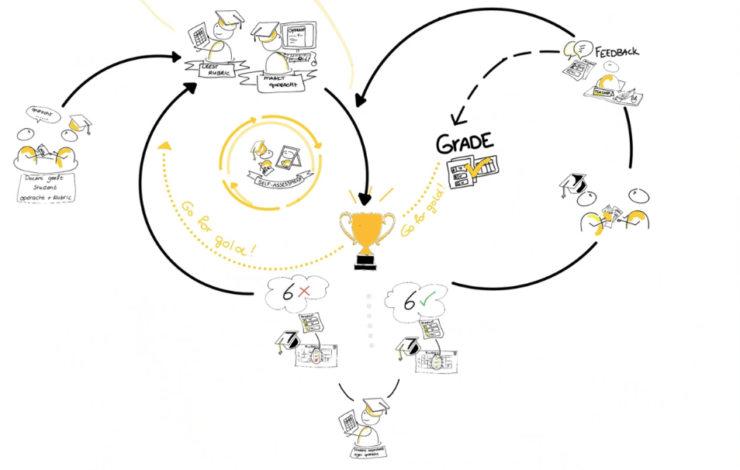News
Looking back at Inspiration café Incremental Grading
Incremental grading: let students assess their own work. Though this might sound strange at first, incremental grading can have several advantages for both teachers and students. During the Inspiration café on May 14th, Alex Lodder & Christian Köppe spoke about incremental grading (IG), and their experiences based on the implementation of IG in two courses at Utrecht University. Christian works at the Freudenthal institute, and researches the effects of incremental grading. Alex works for Educate-it, and supports Christian with the experiments he does.
 Discrepancy in Grading
Discrepancy in Grading
Giving students grades is still an indispensable part of education. However, there are a lot of aspects to the grading process that are not ideal. For example, most people agree that synchronous feedback (in conversation with the student) is more effective than asynchronous feedback (a reaction to handed in work), but the reality is that asynchronous feedback is used the majority of times. Second, most people agree that the determination of a grade should be the shared responsibility of both teacher and student, whereas in practice the teacher does all the grading. These are only some examples where a discrepancy exists between what the teacher would ideally want, and what is the current reality in grading.
Incremental Grading
The idea of incremental grading is to give students control over their assessment process.
For example, if the assignment is a report, students are provided with a grading rubric. The student starts working on the report and fills out a grading request, in which he or she underpins the grade using the rubric. In reaction to this, the teacher either validates or disagrees with the grade, and provides elaborate feedback. This process keeps repeating until the student has reached a satisfactory grade, or until there is a deadline for the assignment. There is no limit to the amount of times a student can request a new grade within the time period of the course.
Advantages
Incremental grading can have advantages for both the students and teachers. The research done in two UU courses showed that IG can have a positive influence on students’ self-assessment skills. Moreover, students are more motivated and some keep improving their grade, though this is not necessary for passing the course. For teachers an advantage is the spreading of the workload, since not all grades and feedback have to be provided at the end of the course.
Future Adaptations
What Christian and Alex have learned, is that having a rubric of good quality, is essential for incremental grading. A good rubric needs to be elaborate and it needs to be clear what is a sufficient, and an insufficient performance. Still, when you have a very good rubric, it does take time to learn how to work with it, especially for the students. In the future, it can be helpful for students to provide examples of a good and a bad product. Finally, the process of IG can require quite a lot of work and time at the beginning, so it is very important to match the assignment weight with the amount of time the grading process takes. With these adaptations, letting students assess their own work more and more, might become the new normal.
Want to know more?
Read the article ‘The pattern language of incremental grading‘.
Author: Naomi Smorenburg, student Utrecht University

